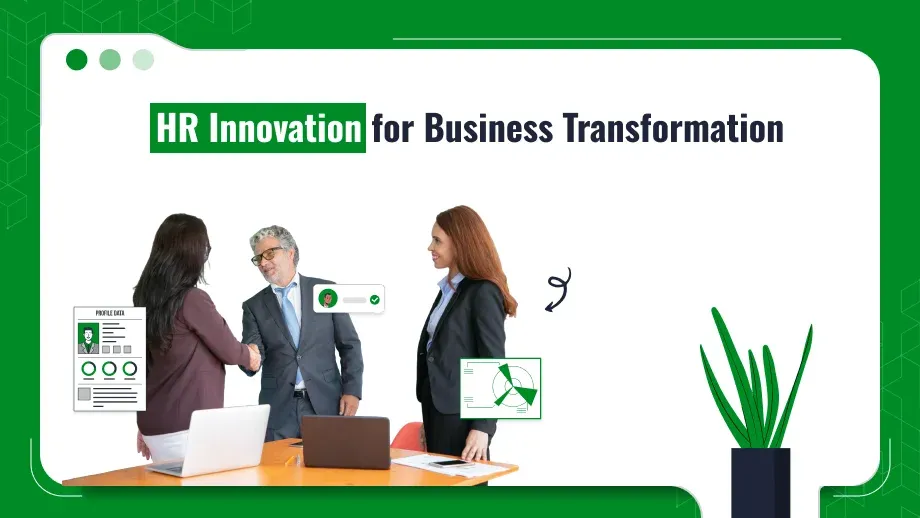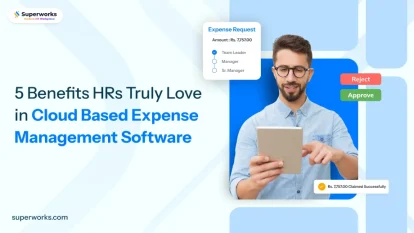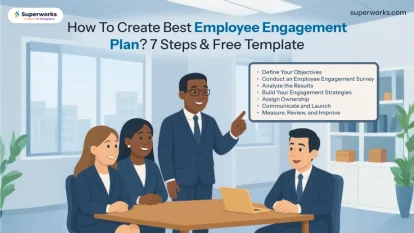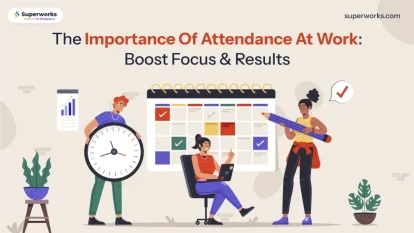
The business world of today is growing rapidly and organizations are being pressured to be flexible and evolve. This is why HR innovation plays a role as a catalyst to drive business transformation. In the race to retain and attract the best talent, engage their employees, and improve how they manage their employees, implementing innovation into HR practices is essential. This blog will explore the importance of HR innovations as well as the latest trends, strategic advantages, and tips for practical use.
What is HR Innovation
HR innovation is the introduction of new ideas, methods and technology to improve HR processes and employee experiences. It covers a variety of methods including automating recruitment, and utilizing data analytics to create personalized learning and development programs. The aim is to develop an efficient, engaged and flexible HR department that is in line with business goals.
Why HR and innovation
- Business Growth: Businesses that are innovative in HR will be more likely to experience sustainable growth. Innovative HR Activities practices could result in increased efficiency, savings on costs, and increased employee productivity, all of which improve the overall profit.
- Retention and Attraction of Talent In a highly competitive marketplace, keeping top talent is crucial. innovation in HR aids companies in improving their employer brand as well as creating the employer’s value proposition (EVP) that’s popular with prospective employees.
- Employee Engagement Engaged employees have higher productivity and are less likely to leave the company. Innovative HR practices focus on the experiences of employees which boosts morale and satisfaction. People analytics is yet another major development in the field of HR innovations.
- Organisational Agility: In a fast changing business world organisations need to be agile. innovations HRMS SaaS Companies can quickly adapt to changes in the marketplace to remain competitive and adaptable to new opportunities.
HR and innovation Trends
1. AI in Recruitment
One of the biggest developments for innovations in HR practices in the process of recruiting can assist in screening candidates and analysis of CVs as well as conduct initial interviews with chatbots. This speeds up the hiring process and lessens human bias, resulting in an inclusive workforce.
AI in Recruitment Benefits
- Performance: AI can process thousands of applications in a matter of minutes and HR teams can concentrate on more strategic tasks.
- Bias reduction: AI algorithms can be created to minimize biased selection, while also promoting diversification and inclusivity.
- Candidates Experience: Chatbots answer questions from candidates instantly increasing the overall experience of interaction and engagement.
2. People Analytics
People analytics is a different significant advancement in HR innovation. Employing data, companies are able to gain insight into employee behaviour, engagement, and overall performance. This type of decision-making based on data helps HR managers make informed decisions about the management of employees, talent management, and the development of employees.
People Analytics Benefits
- Information-based Decision Making: The data analysis enables HR leaders to make decisions based on the facts, not their gut.
- Predictive Insights: By analyzing the past, organizations can forecast the future, such as employee turnover and engagement levels.
- Customised Strategies: People analytics enables HR strategies to be tailored to specific organisational needs.
3. Remote Work Technology
The COVID-19 pandemic is swiftly declaring the widespread adoption of remote working technologies. Organizations are using various devices to facilitate remote collaboration and productivity, and communication. HR managers are utilizing the online systems for onboarding, performance management software, and engagement tools to make remote employees feel valued and respected.
Remote Work Technology
- Software for Collaboration: Tools such as Slack, Microsoft Teams, and Zoom let remote employees collaborate and communicate.
- Instruments designed for Performance Management such as Lattice and 55 help HR departments to track employees’ performance and give them constant
- Virtual Onboarding Solutions: Platforms such as BambooHR and Workday allow you to join remote employees to ensure that they feel comfortable and are part of the business.
4. Personalised Learning and Development
Personalisation is a growing trend in employee development. Companies are using HRMS software as well as platforms for learning (LXP) to design courses of learning that are tailored to each requirement of employees and their career goals. This approach not only develops employee skills but also creates a culture of continuous learning.
Personalised Learning Benefits
- More Engagement: Employees will be more engaged in courses that are relevant to their personal interests and career objectives.
- Improved retention: Individualized learning opportunities increase retention rates as employees feel valued and appreciated.
- Better Performance: Customized learning experiences lead to skill development that impacts job performance.
5. Employee Well-being Programmes
Organizations are recognizing that employees are essential to well-being. Modern HR practices include full wellness programs that take care of physical, mental, and emotional well-being. By prioritizing wellbeing companies can create a more welcoming and productive workplace.
Well-being Programme Components
- Mental Health Support: Access to counseling services, stress management tools, and mental health days could be a huge boost to the well-being of employees.
- The Physical Health Initiative: Challenges to screenings for fitness and wellness, and wellness stipends for employees, help them keep their health in check.
- Work and life balance: Flexible working arrangements and policies regarding pay time off could help to achieve an ideal equilibrium between your work and personal life.
Benefits of HR Innovation
Innovative HR solutions for the workplace bring many advantages to companies:
1. Higher Employee Engagement
Employees who are enthusiastic and productive are a key factor in the general success of the business. Utilizing innovation in HR like continuous feedback and recognition systems, companies can build an environment of appreciation and involvement. These tools enable employees to express their opinions and be acknowledged for their contributions.
Engagement Tools
- Pulse Surveys: Regular surveys can measure employee sentiment and identify areas to improve.
- Recognition Platforms: Tools such as Bonusly and Kudos let employees recognize and reward their colleagues and create a positive workplace environment.
2. Better Talent Acquisition and Retention
The war for talent is hot. The role played by HR’s contribution to innovation can help organizations improve their recruitment strategies, as well as the reputation that their companies have. With the aid of modern technology employers can make hiring much easier and locate the most qualified candidates in a short period of duration. Innovative onboarding programs improve the experience of new hires, leading to higher retention rates.
Strategies for Talent Acquisition
- Employer Branding: Building your employer’s image a strong one via online platforms and employee testimonials will draw the top talent.
- Referral Programs: Employee-led referral programs help existing employees to suggest candidates for employment which can lead to higher retention rates.
3. Organisational Agility
In the current environment of continuous change, businesses must be agile. HR technology can aid companies adjust quickly to changing market trends. By creating an environment that promotes adaptability and flexibility, HR professionals can make sure they have employees able to take advantage of opportunities and issues.
Building Agility in HR
- Cross-functional teams: Collaboration between departments can help solve problems and spur creativity.
- Continuous feedback loops that are continuous enable organizations to adapt to the requirements of their employees.
4. Making Data-Driven Decisions/strong>
Insights gained from HR analytics can be used to make informed decisions. With the help of data, organizations can spot patterns and trends and make educated decisions about managing employee engagement, talent management and development of the organisation. This is the basis of innovation hr solutions.
Using Data Analytics
- Workforce Planning: Review the data on the workforce to predict the needs of staff and determine skill shortages.
- Analyzing Employee Retention Using the information on employee turnover, HR managers can develop strategies to keep the best performers.
With perfect HR Innovation you can boost your HR efficiency by 30%!!
Don’t miss your chance to boost HR performance.
innovation in HR Challenges
While the benefits of innovation in hr are clear organisations may face some challenges during implementation:
1. Resistance to Change
Change is met with resistance. To overcome this, organizations should communicate the benefits of innovative HR solutions to all the stakeholders, and also involve employees throughout the development process. Involving teams in the creation of new HR practices could aid in gaining acceptance and buy-in.
Managing Resistance
- Transparent Communication: clearly communicate the reasons behind change as well as the benefits that will be gained to ease worries.
- Transparent Communication: clearly communicate the reasons behind change as well as the benefits that will be gained to ease worries.
2. Budget Constraints
New technologies and processes require investment. To get around budgetary constraints, organisations should prioritize HR initiatives that are aligned with their goals for strategic planning and provide the greatest ROI. Collaboration together with HR tech companies helps to come up with affordable solutions may also be beneficial.
Cost-Saving Strategies
- Phased rollout: Launch the new initiatives for HR in stages to control costs and decrease the risk.
- Utilize Existing Tools: Organizations should consider making the most of the tools and technology they have in place before investing in new ones.
3. Data Privacy and Security
As organizations adopt new technology Data security and privacy issues arise. HR managers must ensure that they are in compliance with the regulations and implement robust data protection. With clear policies and utilizing an encrypted HRMS platform, organizations can safeguard the personal data of employees.
Data Security Best Practices
- Regular Audits: Audit data practices regularly to identify potential weak points.
- Training and Awareness: Train employees on data privacy and security practices to reduce the risk of breach.
Creating a Culture of HR Innovation
A culture that encourages HR’s involvement in the process of innovation is essential to ensuring long-term success. Here are a few ways to achieve this:
1. Encourage Experimentation
HR departments should be encouraged to experiment with different things. This could be accomplished by way of hackathons, pilot programs or workshops. In promoting an experimentation mindset organizations can come up with new ways to boost participation and increase productivity.
Examples of Experimentation
- Pilot Programs: Trying out the new initiatives in HR on a smaller size allows companies to gather feedback and make changes prior to fully launching.
- Innovation Labs: Establishing dedicated labs or teams to research new HR technology and practices can help drive creativity and ingenuity.
2. Leadership
Leadership is key to driving HR innovation. CXOs and HR managers are expected to lead innovation initiatives and show that they are committed to an innovative workplace. This includes giving resources and support to HR teams to explore innovative practices and technologies.
Leadership Actions
- Visible Participation: Leaders should be involved in HR initiatives and encourage open conversation about innovation.
- Resource Allocation: Offering HR teams the resources to explore new concepts is crucial to cultivating an environment that encourages creativity.
3. Learning
To stay competitive organisations must learn continuously. Insisting on the development of employees and their growth ensures that HR departments will stay current with the latest developments and trends in the business.
Continuous Learning Strategies
- Training Programs: Conduct regular training sessions that cover the latest HR technology and methods to keep your teams up-to-date.
- Industry Events: Encourage participation in industry events and workshops for networking and to gain knowledge.
4. Employee Engagement
Involving employees in the innovation process could give valuable insights and accountability. Inquiring for feedback and suggestions from employees is not just a way to make HR initiatives more efficient but also creates a culture that encourages cooperation and participation.
Employee Involvement Methods
- Feedback Mechanisms: Run regular feedback channels such as surveys and focus groups so employees can have their say and contribute to HR initiatives.
- Idea Competitions: Create contests for HR innovation ideas that inspire employees to think outside the box and help the organization’s achievement.
Conclusion: HR Innovation for the Future
In the end, HR innovation is crucial to ensure that businesses thrive in a highly competitive business. Through embracing HR innovation and leveraging technology, companies can increase employee engagement, improve retention and the recruitment of new talent. They can also create an environment that is flexible and nimble.






